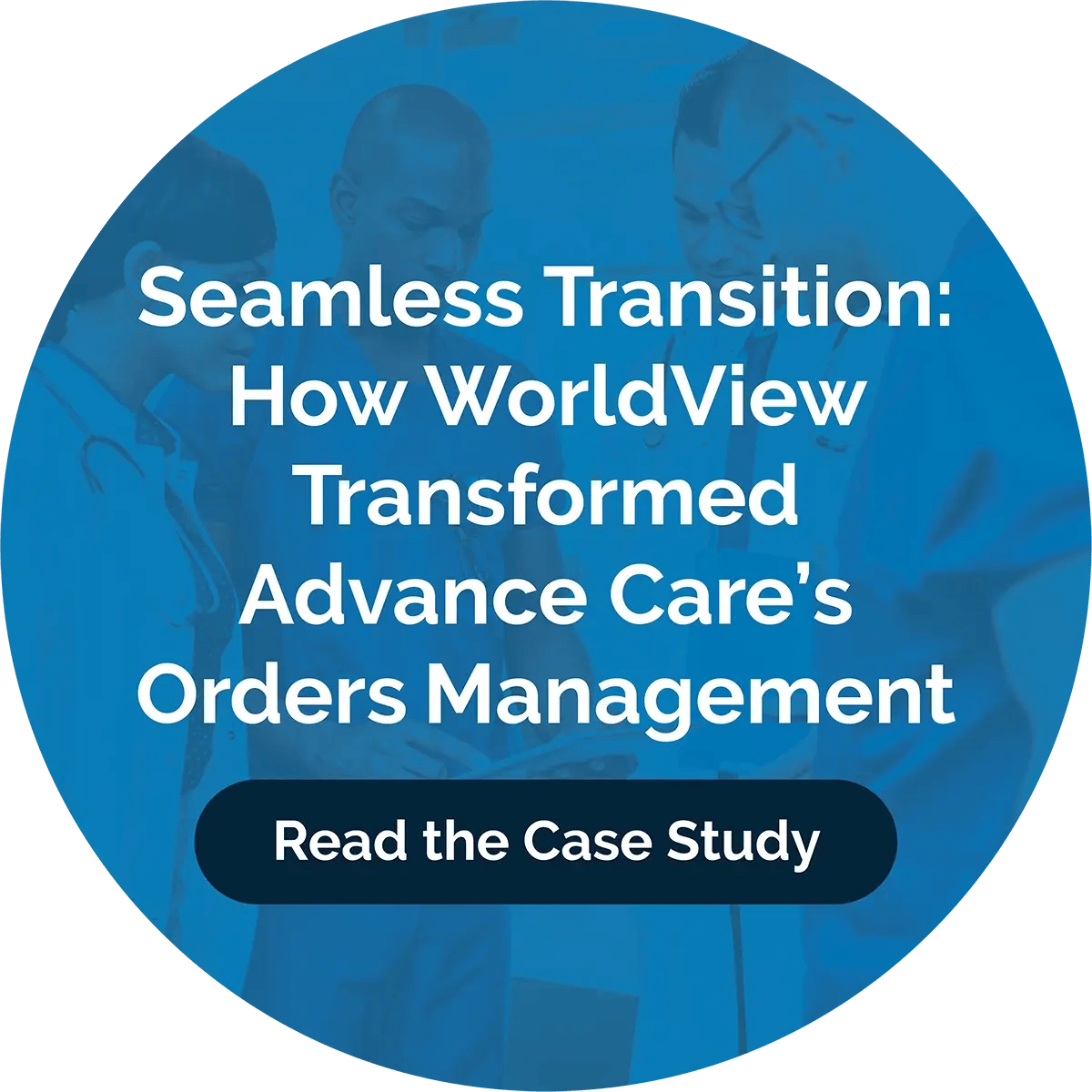Hospice Documentation Tips

Hospice documentation strategies can transform hospice management and the services you provide. Follow these hospice documentation tips to organize a streamlined system for enhanced care delivery and compliance, leveraging WorldView tools for effective document management.
The Role of Documentation in Modern Hospice Care
Best practices in hospice documentation go beyond convenience — they are essential for meeting regulatory requirements and operational needs. Documentation is crucial in meeting private insurance, Medicare, and HIPAA requirements. It can make or break approvals and reimbursements. To maintain proper compliance, hospice agencies should implement documentation procedures that satisfy all needs.
Proper documentation is also essential to providing the quality of care that patients deserve. Thorough record-keeping of history notes and day-to-day care files can help ensure your team members have the necessary information to treat patients with compassion and manage tasks efficiently. A systematically organized documentation system can also provide legal protection when you are required to submit records to regulatory bodies regarding specific case events.
What Sets Leading Hospices Apart in Documentation Practices
Hospice agencies looking to improve their record-keeping processes may want to explore modern hospice documentation strategies. Organizations that set the standard have tools to consolidate records efficiently and accurately. Team members from bedside care to billing can access records as needed and collaborate on document updates.
Patients and family members don't have to take on the burden of updating records and can instead feel confident that the care team is managing all aspects of care effectively during this difficult time. Improved care delivery based on accurate and detailed information reduces the challenges and speed bumps of end-of-life care.
Top 6 Hospice Documentation Tips
When refining your hospice documentation process, consider implementing the following methods:
- Adopt comprehensive EMR systems: Using electronic medical records keeps important information at your fingertips. Electronic systems not only make information more accessible to your staff members but also promote timely and accurate data entry and collaboration.
- Ensure timely updates: End-of-day charting can leave a time gap in patient care. When you have an easy-to-update electronic system, set clear expectations for staff to input updates promptly. The faster this information is integrated into the records, the more effective members of your care team can collaborate to provide better care and services.
- Train staff on documentation best practices: In addition to utilizing convenient tools and establishing clear expectations, it's important to allocate time for training staff on best documentation practices. This ensures they can seamlessly integrate these processes into their work routine. Holding regular training sessions for staff to review both software tools and your organization's specific standards can further reinforce their understanding.
- Integrate quality checks: Ensure that best practices take root with regular audits for documentation accuracy. One of the best ways to assess effectiveness is to perform quality checks and evaluate compliance against established standards.
- Leverage technology for efficiency: Once staff are proficient with the tech tools, they can streamline documentation within an electronic medical records system. Assess which tools within your system can reduce documentation time, redundancies in record-keeping, and other inefficient practices.
- Personalize patient care plans: Each care plan must be customized to individuals' treatment and comfort needs. Storing these customizable care plans in one centralized location where all team members can access and update them as needed facilitates continuity of care.
WorldView's Solutions for Hospice Documentation
To effectively implement all the hospice documentation tips we've outlined, you need the right tools. Documentation solutions like WorldView can automatically capture and upload documents and data from patient records. This solution works with both paper and electronic sources, consolidating information across mediums in one document management system. Your staff can efficiently process documents and set up a system to update them as needed, all in one place.
A case study examined Advance Care's adoption of WorldView's automated documentation solutions. Advance Care highlights the positive impact of WorldView's customizable options on their business compared to previous one-size-fits-all document tools they've used.
How WorldView Can Improve Hospice Document Management
Quality documentation tools are essential in modern hospice care settings to deliver top-notch care. With WorldView tools, you can optimize your hospice document management, improve compliance, and boost operational efficiency by streamlining document intake and facilitating collaboration on patient care plans.
Evaluate and improve your current documentation processes using the tips above. Schedule a demo with WorldView to see how we can elevate your hospice document management to the next level.
Blog Post Tags
BusinessGet Awesome Content Delivered Straight to Your Inbox!
Posts by topic
- Healthcare
- Business
- AI
- Hospice
- AP Workflows
- Home Care Management
- hospice-care
- General
- Industry Insights
- agency
- Blog
- Commercial
- reporting
- Data Analytics
- billing
- referrals
- News
- Referral AI
- business goals
- Operations
- business development
- partners
- Integration
- Healthcare Trends
- leadership
- Medicare
- Compliance
- audit
- medicaid
- Better Charting
- regulations
- Application
- Automation
- finance
- CRM
- DMSi
- Events
- KanTime
- Press Release
- Revenue Growth
- Announcements
- Artificial Intelligence
- EHR
- ESign
- Guides
- Homecare Homebase
- Mobile
- Physician Order Tracking
- axxess
- interoperability
- payor See All See Less


.png?width=596&name=WV%20Hc%20Clinical%201%20Web%20(2).png)
.png?width=596&name=WV%20Hc%20Clinical%201%20Web%20(5).png)
.png?width=596&name=1%20(8).png)